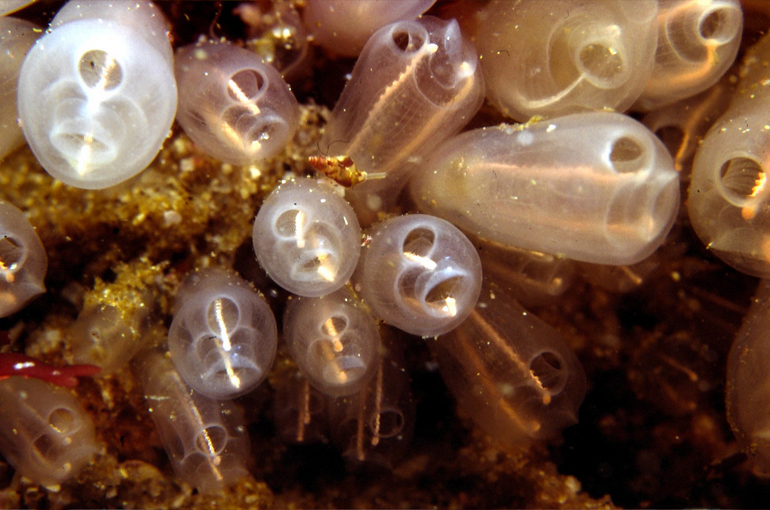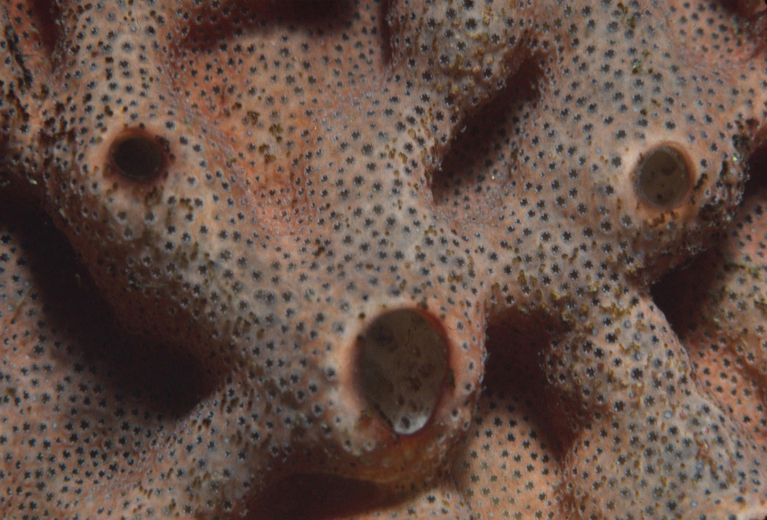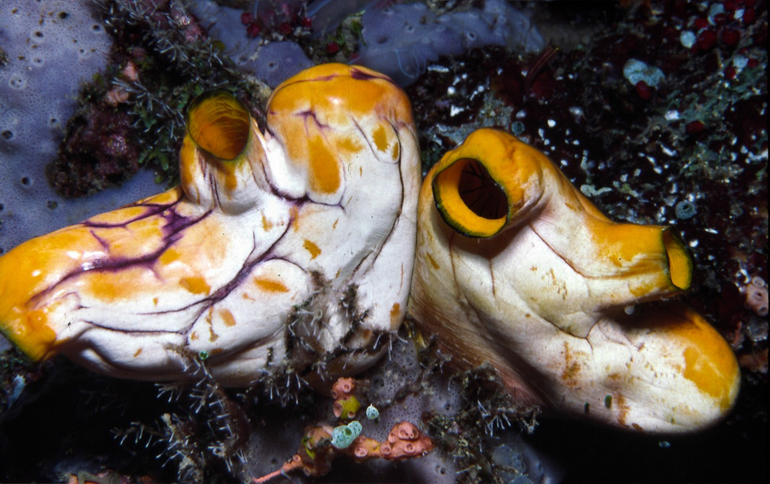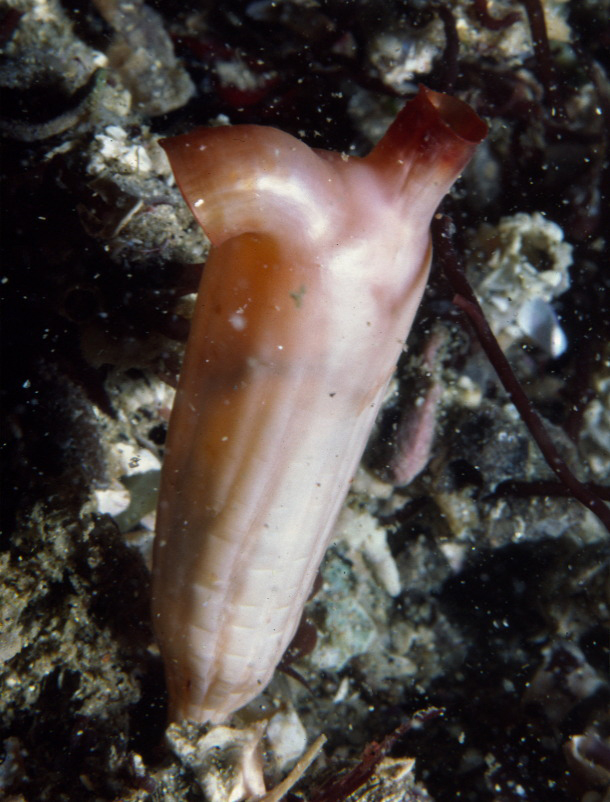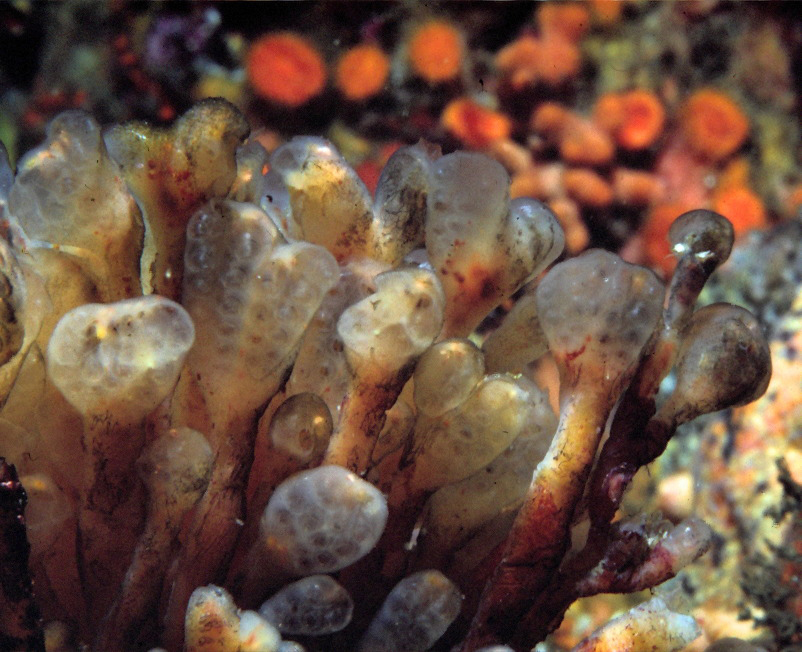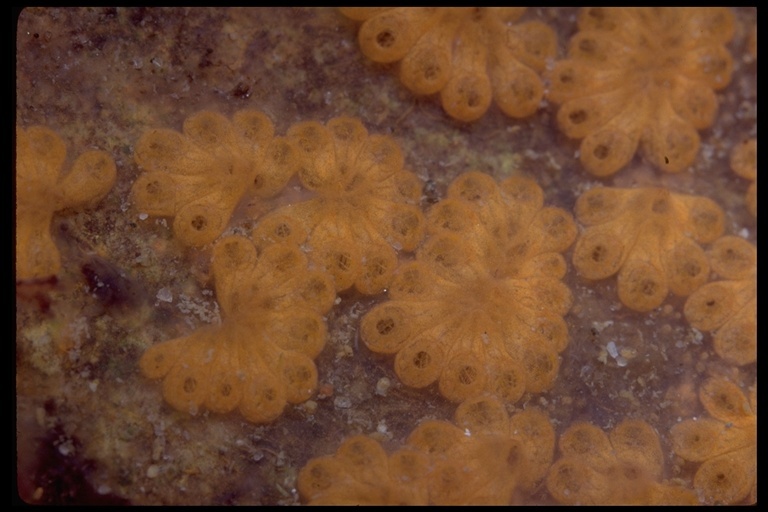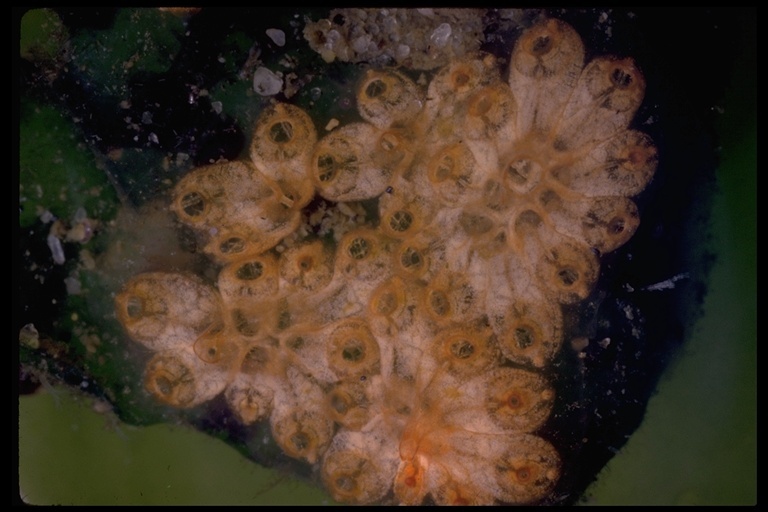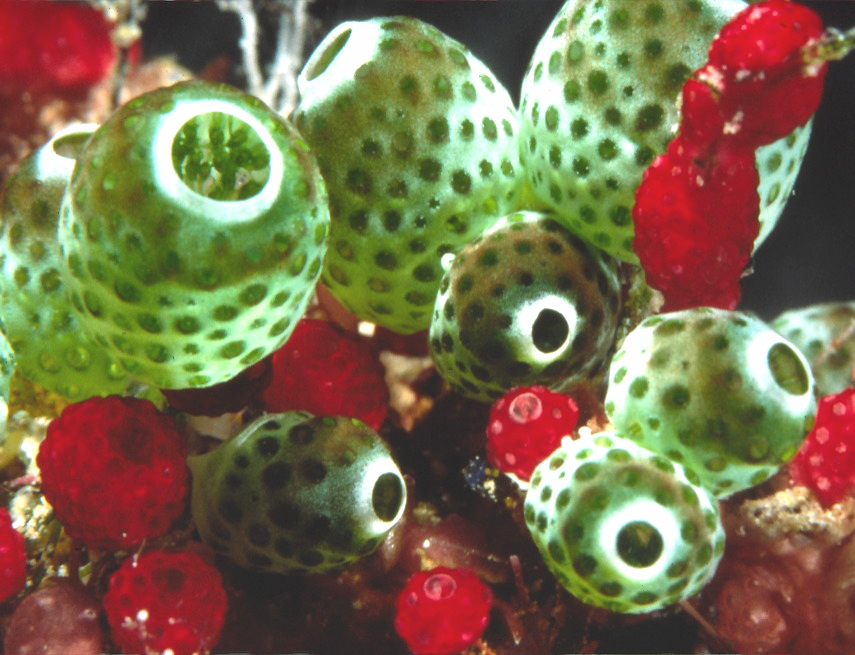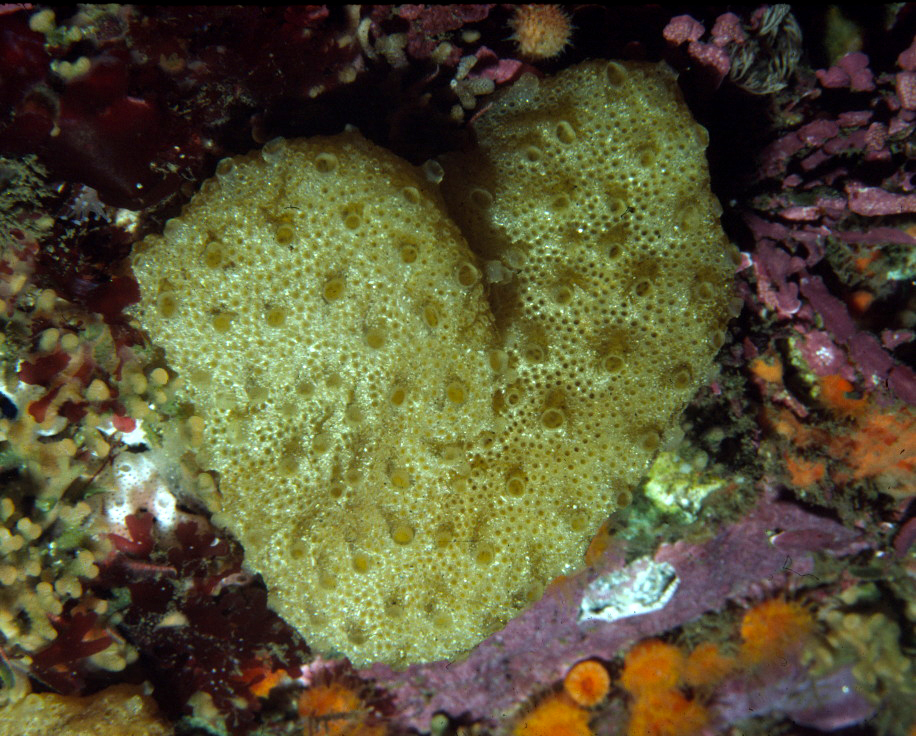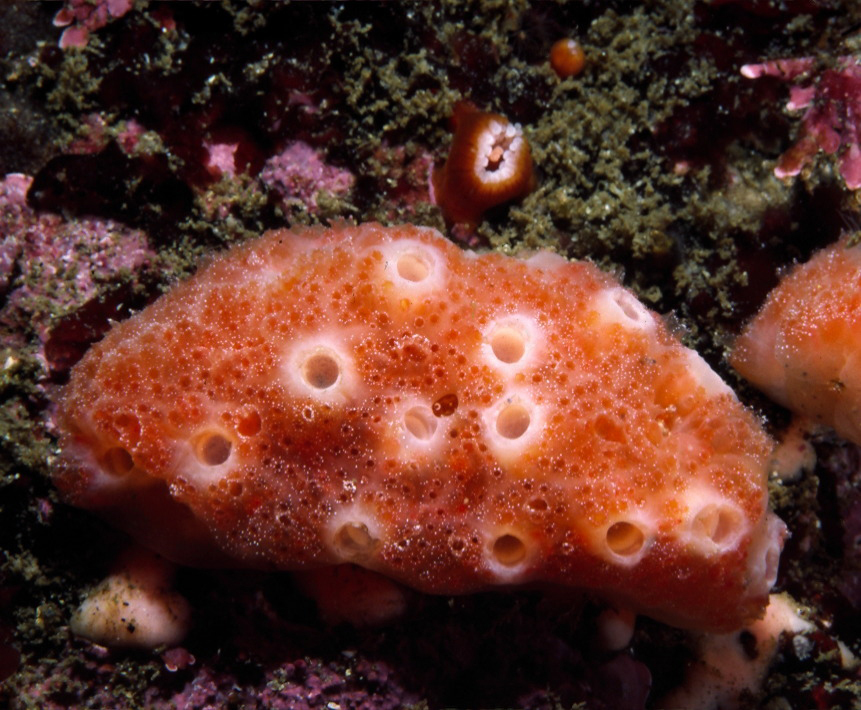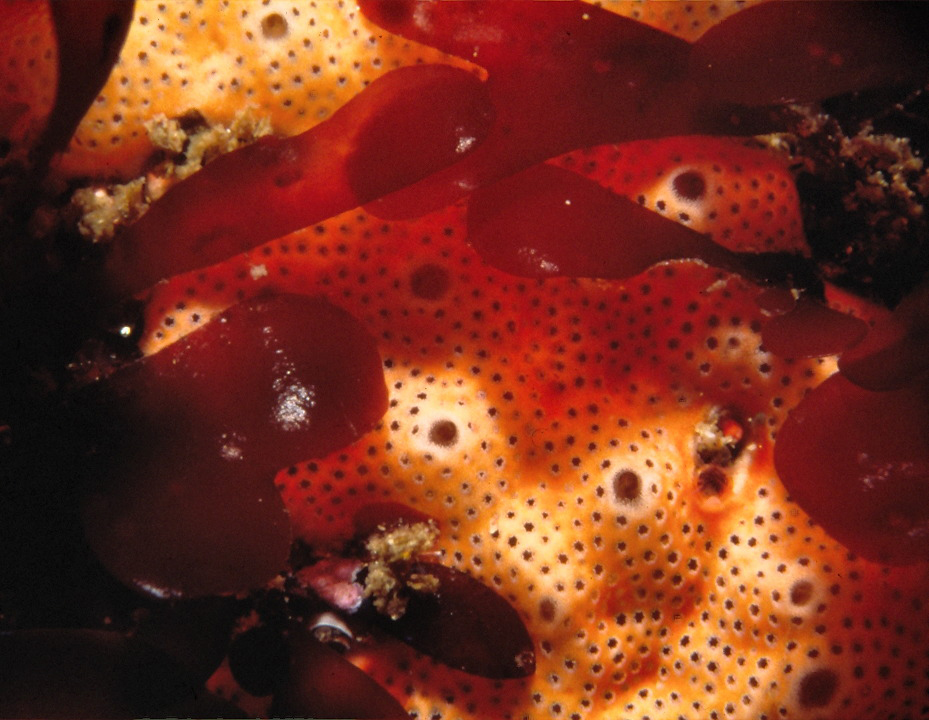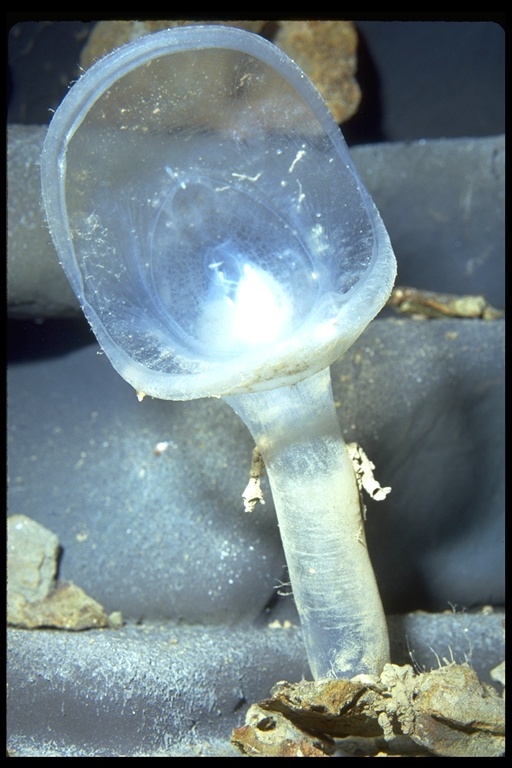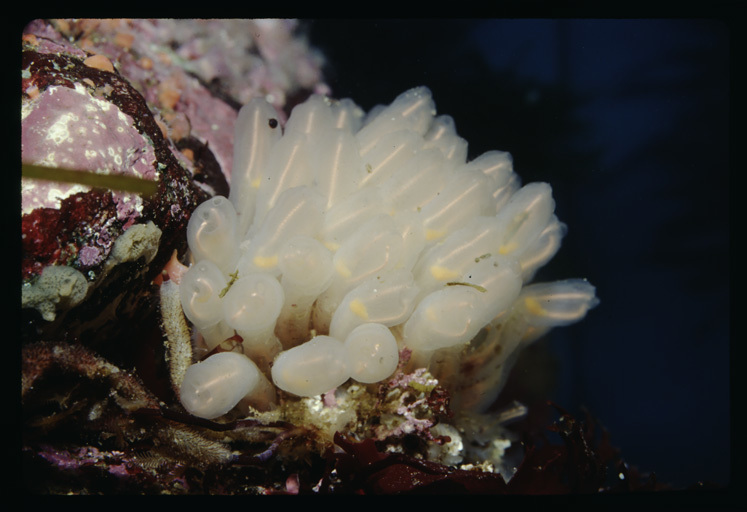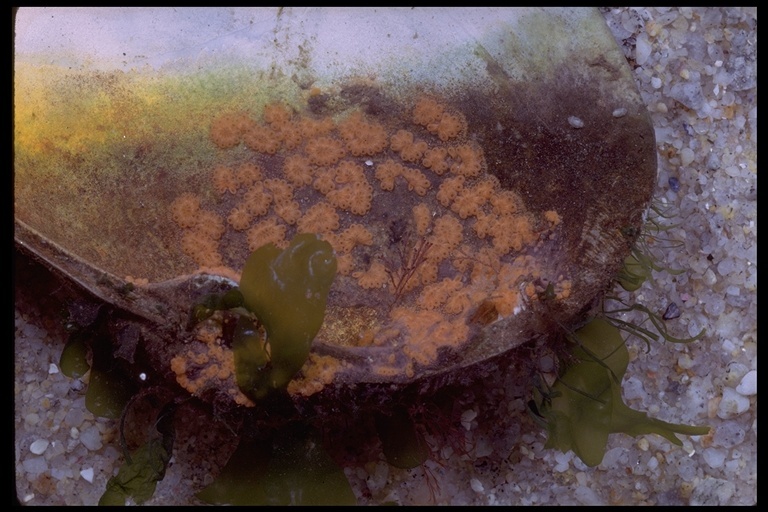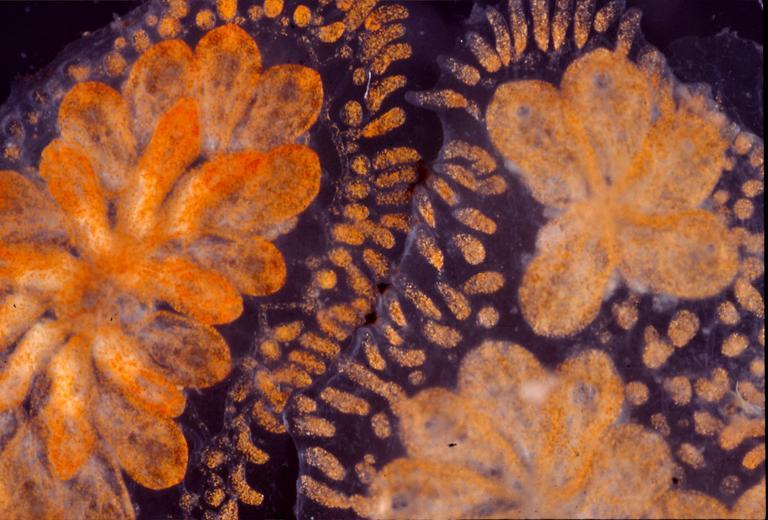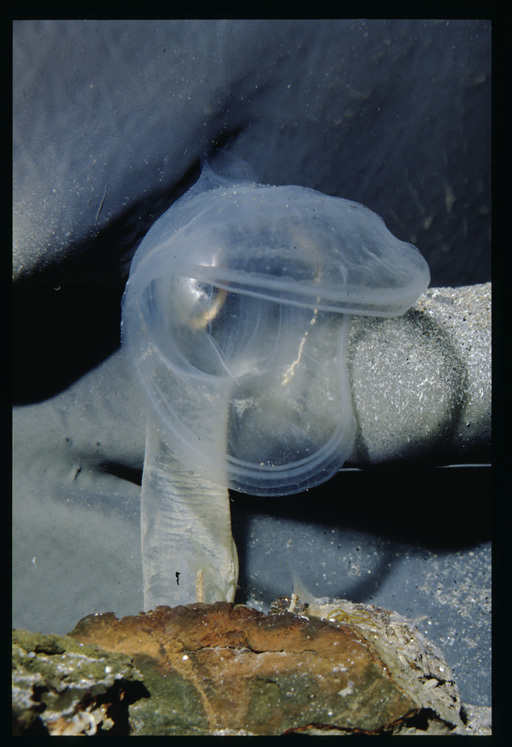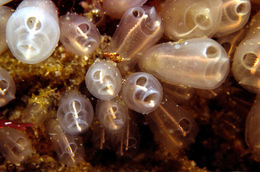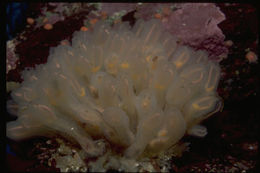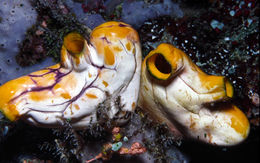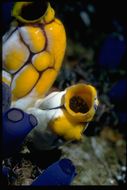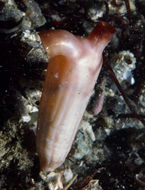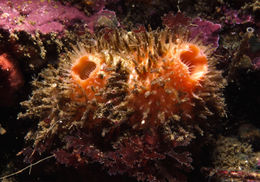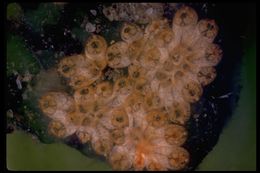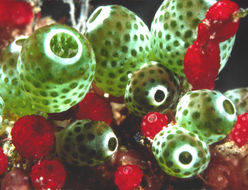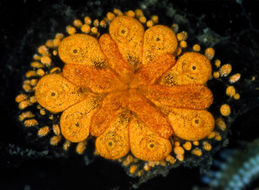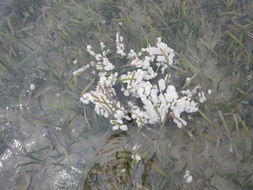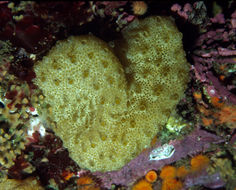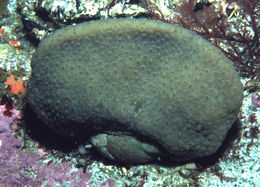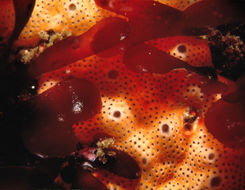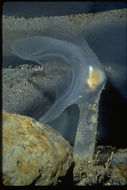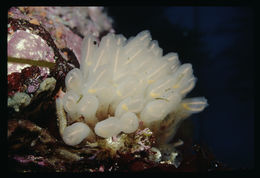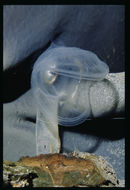-
2005 California Academy of Sciences
CalPhotos
This actually is a colonial filter feeding animal, though the individuals are borne in separate tubes of tunic. The 'filaments' of the light-bulbs form a groove in the wall of the pharynx, the endostyle. Here iodine is extracted from sea water to form a compound akin to thyroxin. Larvae are brooded at the base of each light-bulb.
-
2009 California Academy of Sciences
CalPhotos
-
2006 California Academy of Sciences
CalPhotos
Depth 15 m.
-
2005 California Academy of Sciences
CalPhotos
A common solitary ascidian in the Indo-Pacific.
-
2007 California Academy of Sciences
CalPhotos
-
2006 California Academy of Sciences
CalPhotos
Depth 12 m. Height about 4 cm. These solitary tunicates are broadcast spawners.
-
2005 California Academy of Sciences
CalPhotos
In the Fall when this colony was photographed most tadpole larvae already have been released. Photographed at 20 m depth.
-
2005 California Academy of Sciences
CalPhotos
These solitary tunicates characteristically are borne on a slender stalk of about 3 cm and armed with spicules. Fertilization of these hermaphrodites is external. Depth 13 m.
-
1999 California Academy of Sciences
CalPhotos
-
1999 California Academy of Sciences
CalPhotos
-
2005 California Academy of Sciences
CalPhotos
These colonial tunicates harbor symbiotic, prokaryotic algae which account for the bright green color. The tunicates are accompanied by a species of red tunicate.
-
2005 California Academy of Sciences
CalPhotos
Each individual in this colony lives for about seven days and then dies by 'programmed cell death.' Here new individuals are being budded off lateral to the smaller senescent ones.
-
2005 California Academy of Sciences
CalPhotos
Cosmopolitan organism found worldwide. Individual zooids are hermaphroditic; they do not self fertilize. Non-feeding 'tadpole' larvae settle to found new colonies. The larvae have the characteristics of a vertebrate embryo making them relatives of ours. Field of view 15 mm.
-
Photographed in the seagrass bed
-
2006 California Academy of Sciences
CalPhotos
Both solitary and colonial tunicates are common on the Monterey Peninsula. It would take minute dissection to identify this specimen down to species.
-
2006 California Academy of Sciences
CalPhotos
Depth 14 m.
-
2005 California Academy of Sciences
CalPhotos
As with other colonial tunicates, the smaller pores are the filter feeder's intake pores; several of them share the larger excurrent pores. The tunicate's tadpole larvae may spend from a few minutes to several hours in the plankton before metamorphosis. Depth 16 m.
-
2005 California Academy of Sciences
CalPhotos
This filter-feeding colonial animal is a chordate--it's in the same phylum we are. The tiny apertures are intake pores; several of them share the larger common excurrent pores. The animals are hermaphroditic; they reproduce sexually with typical tunicate tadpole larvae. 12 m deep.
-
2000 California Academy of Sciences
CalPhotos
found in Monterey Bay Canyon
-
2009 California Academy of Sciences
CalPhotos
-
2015 California Academy of Sciences
CalPhotos
-
1999 California Academy of Sciences
CalPhotos
-
2005 California Academy of Sciences
CalPhotos
Adjacent Botryllus colonies will fuse if they share one allele of a common 'fusibility gene.' Here, lacking such an allele, the colonies recognize each other as non-self and rejection occurs in a reaction analogous to human organ rejection following transplantation. Field of view 15 mm.
-
2015 California Academy of Sciences
CalPhotos


